The Car Ride Home
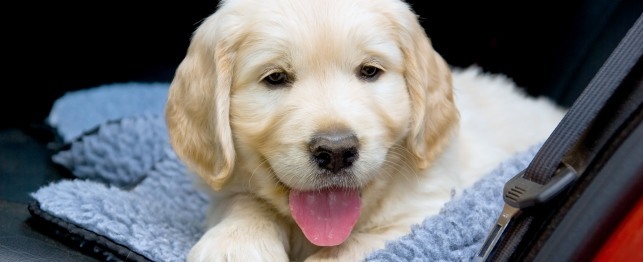
Dogs
How should you transport you new puppy home in the car? This is probably one of the first questions you ask yourself after you have signed off on your new puppy. Should he be transported in a crate? Should he be allowed to gallivant around between the seats? Should he be on your lap? Is it better to have him in the front or back? What are the issues? What are we trying to achieve and what risks are we trying to avoid?
And as with many other behavioral matters, these are questions for which everyone has answers. In case you hadn't noticed, animal behavior is a subject about which everyone's an expert. If you go to a cocktail party and ask 10 people how they would deal with a new pup, you will get 10 different answers, quite possibly all wrong.
Let's look at the genuine concerns:
Your safety. You really don't want a pup running around on the floor of the car possibly getting wedged under the pedals while your are driving. That wouldn't be good for you or the pup.
The pup's safety. Very young pups are not particularly well coordinated and if allowed to wander around on the seats may fall off the edge onto the floor, possibly resulting in injury to them. In addition, they may get crushed if someone slides on top of them as the car swerves around a corner and could be stepped on if they wind up on the floor.
Front or back seat? Air bags are a hazard of front seat travel, to children and to pets. If an air bag is activated, expanding at 200 mph with the force of a prizefighter's punch, much damage can be done to the youngster. It might even be killed.
Crate or carried? One thing's for sure, a crate will hamper any unwanted excursions by the pup and for some pups may be a good solution. But the pup must be 'at home" in a crate and comfortable in the car for the crate to be useful. For crate-shy or timorous pups, lap travel may be best.
Safety harness or not? Even if you could find a safety belt to fit your new puppy, this is probably not a good way to go. The pup will be unfamiliar with this type of restraint and may panic. Things are already tough enough for the pup so it's probably not a good idea to add insult to adversity.
The pup's psychological well being. One of the biggest concerns is that the pup may be terrified of the first-time experience of car travel. Coupled with recent separation from its mother and sibs and introduction to its new family members may take its toll, making the whole experience "memorable" in the worst sense. In this situation, physical contact with human family members, care and attention, warmth and comfort, will diminish the psychological angst. An unpleasant ride home can affect a pup long term. Remember, the critical period of learning continues until around 14 weeks of age. The last thing you want to do is create a lasting impression that car travel is a horrific experience. That could come back to haunt you.
Bathroom breaks? Absolutely. Pups can hold their urine for a number of hours equal to the number of months old they are ... plus one. So a 2-month old pup can hold its urine for 3 hours.
Food and water on the trip? No food is needed on a short-medium length trip and, for reasons of car sickness, it is probably best to avoid feeding the pup till after the trip, if possible. However, you may have to bring food along on longer trips. Pups normally eat every 4 hours. It is always a good idea to bring water.
Climatic considerations. Pups do not thermoregulate themselves well and are prone to hypo- and hyperthermia. Guard against extremes of temperature.


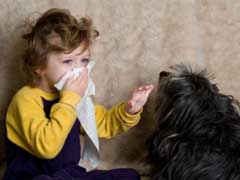 Dog Bad Breath Causes and Remedies
The Ca
Dog Bad Breath Causes and Remedies
The Ca
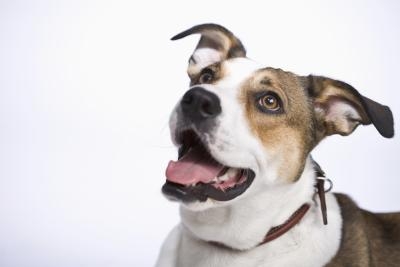 Why Do Dogs Chew?
Why Do Dogs Chew?
Why Do Dogs Chew?. M
Why Do Dogs Chew?
Why Do Dogs Chew?
Why Do Dogs Chew?. M
 Bite Guard: Preventing Dog Attacks and Bites
Bite Guard: Preventing Dog Attacks and Bites
Bite Guard: Preventing Dog Attacks and Bites
Bite Guard: Preventing Dog Attacks and Bites
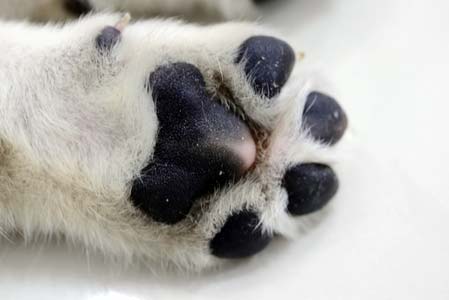 Grooming the Muddy & Stinky Dog
Tips for Cleaning Your Mud-Caked, S
Grooming the Muddy & Stinky Dog
Tips for Cleaning Your Mud-Caked, S
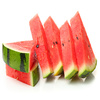 Can Dogs Eat Watermelon?
Everybody loves watermelon, even
Can Dogs Eat Watermelon?
Everybody loves watermelon, even